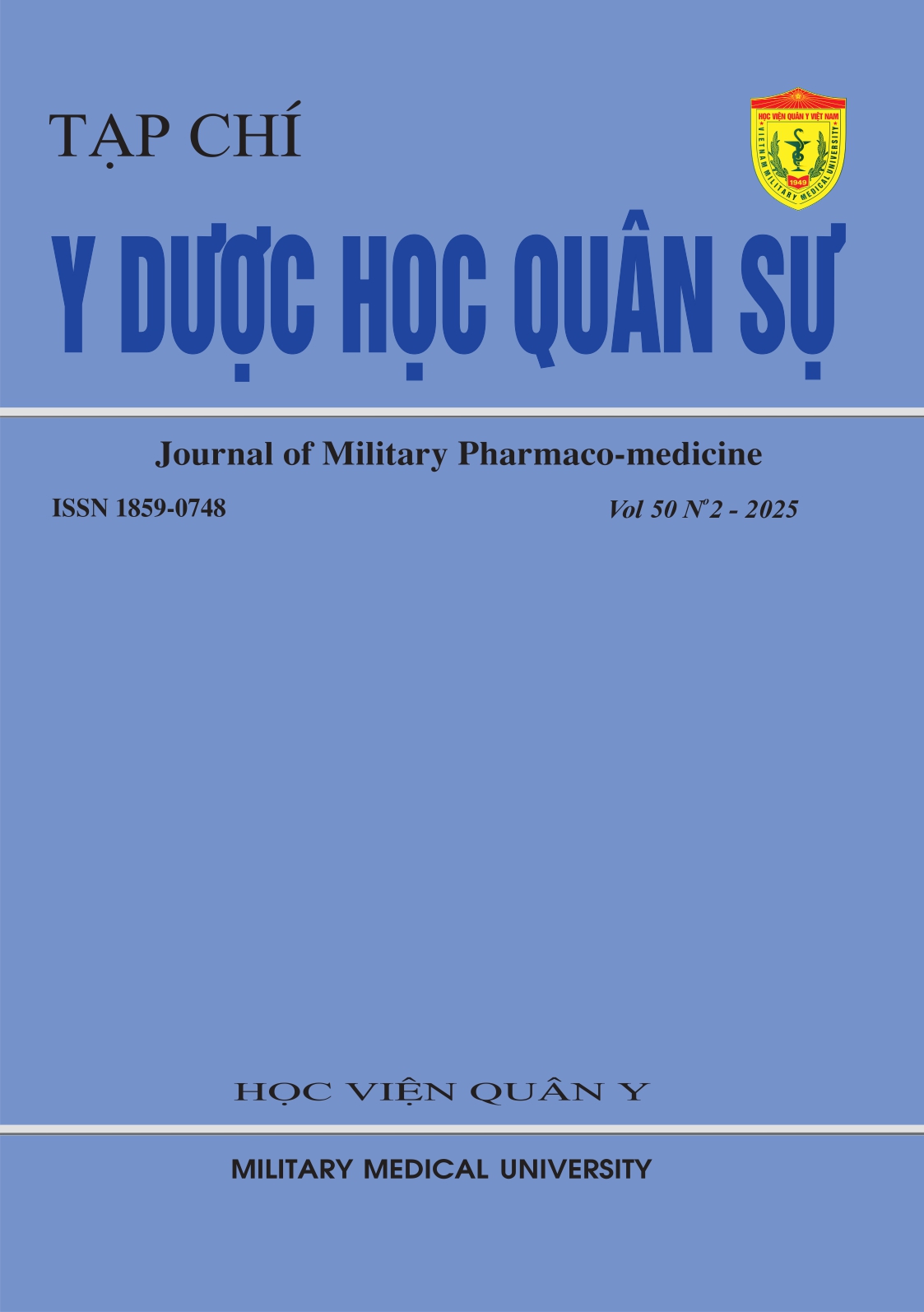A STUDY ON THE NEW TRAUMA SCORE AND IMPACT CORE MODEL IN TRAUMATIC BRAIN INJURY PATIENTS
Main Article Content
Abstract
Objective: To assess the mortality prognostic value of the New Trauma score (NTS) and the IMPACT core model (cIMPACT) in traumatic brain injury (TBI) patients. Method: A prospective, cohort study on 65 traumatic brain injury, treated at Military Hospital 103 from January 2021 to March 2024. Clinical, sub-clinical factor was calculated at admission prior to any treatment intervention. Datas according to research medical records, datas were coded and processed according to statistical methods. Results: The majority of TBI patients were male (78.5%), mainly in the working age group from 16 to 59 years old, traffic accidents were the main cause of TBI (72.3%). The NTS and cIMPACT value at admission time demonstrated predictive value for mortality in traumatic brain injrury patients with an AUC of ROC being 0.76 and 0.805, respectively (p < 0.05), the optimal NTS cut-off value was 13.5 the optimal cIMPACT were 8.5 with sensitivities of 76.7% and 80%, respectively and specificities of 62.9% and 82,9%, respectively. Conclusion: The NTS and the IMPACT core model at the time of admission had a significant prognostic value for mortality in traumatic brain injury patients.
Article Details
Keywords
Traumatic Brain Injury, New Trauma Score, IMPACT core model
References
2. PB Lovett, JM Buchwald, K Sturmann, et al. The vexatious vital: Neither clinical measurements by nurses nor an electronic monitor provides accurate measurements of respiratory rate in triage. Ann Emerg Med. 2005; 45(1):68-76.
3. JH Jeong, YJ Park, DH Kim, et al. The new trauma score (NTS): A modification of the revised trauma score for better trauma mortality prediction. BMC Surg. 2017; 17(1):77.
4. EW Steyerberg, N Mushkudiani, P Perel, et al. Predicting outcome after traumatic brain injury: Development and international validation of prognostic scores based on admission characteristics. PLoS Med. 2008; 5(8):e165; discussion e165.
5. N Carney, AM Totten, C O'Reilly, et al. Guidelines for the management of severe traumatic brain injury, fourth edition. Neurosurgery. 2017; 80(1):6-15.
6. Hà Thoại Kỳ Nguyễn Duy Linh, Võ Lê Thanh Phúc. Một số đặc điểm dịch tễ học bệnh nhân chấn thương sọ não tại bệnh viện trường Đại học Y dược Cần Thơ. Tạp chí Y Dược học Cần Thơ. 2023; 63:70 - 78.
7. G Teasdale, G Murray, L Parker, et al. Adding up the Glasgow Coma Score. Acta Neurochir Suppl (Wien). 1979; 28(1):13-16.
8. MC Gang, KJ Hong, SD Shin, et al. (2019). New prehospital scoring system for traumatic brain injury to predict mortality and severe disability using motor Glasgow Coma Scale, hypotension, and hypoxia: A nationwide observational study. Clin Exp Emerg Med. 2019; 6(2):152-159.
9. Anand P Nair, EP Unnikrishnan. Relation between new trauma score and probability of survival in head injury patients. Kerala Surgical Journal. 2021; 27(1):33-36.
10. Dgsrk Moorthy, K Rajesh, SM Priya, et al. Prediction of outcome based on trauma and injury severity score, IMPACT and CRASH prognostic models in moderate-to-severe traumatic brain injury in the elderly. Asian J Neurosurg. 2021; 16(3):500-506.
11. H Sun, HF Lingsma, EW Steyerberg, et al. External validation of the IMPACT in traumatic brain injury: Prognostic models for traumatic brain injury on the study of the NAPSe trial. J Neurotrauma. 2016; 33(16):1535-1543.


